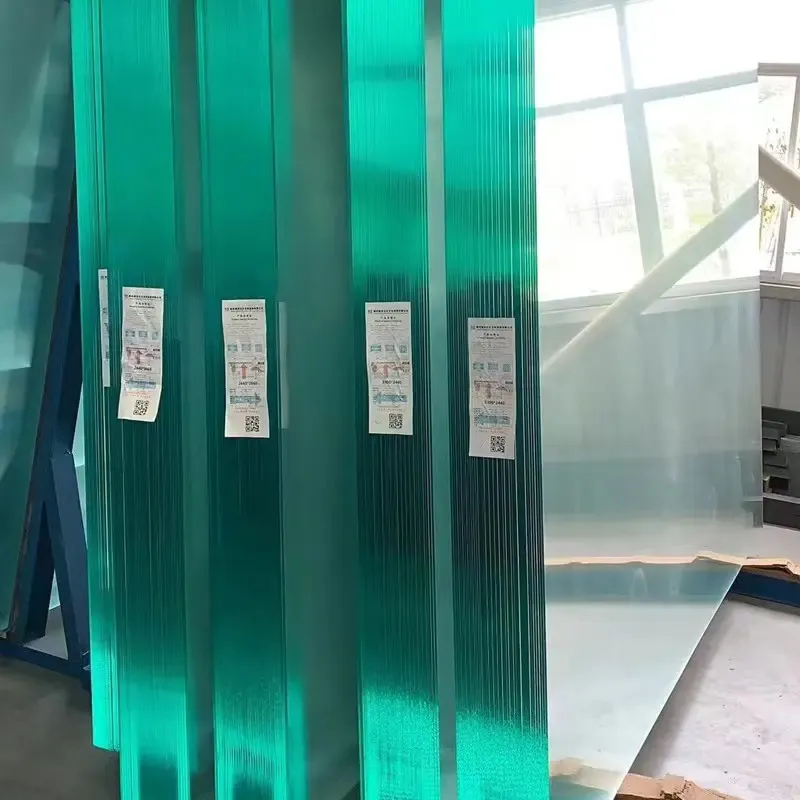Understanding the Types of Obscure Glazing
Obscure glazing is a term that refers to glass that has been treated or designed to obscure visibility while still allowing light to pass through. It is commonly used in various architectural and design applications where privacy and aesthetics are paramount. This article delves into the different types of obscure glazing techniques, their applications, and their advantages.
1. Frosted Glass
One of the most common types of obscure glazing is frosted glass. This type of glass is created by sandblasting or acid-etching the surface, making it translucent. Frosted glass is widely used in bathrooms, office partitions, and doors, offering privacy while still allowing natural light to enter a space. It is particularly popular in modern architecture for its sleek appearance and ability to diffuse light without being completely opaque.
2. Textured Glass
Textured glass features unique patterns or designs that distort images and shapes viewed through it. The textures can range from simple ripples to complex geometric shapes. Textured glass is often used in windows, shower doors, and glass partitions. Its aesthetic appeal enhances the visual interest of a space while simultaneously ensuring privacy. Furthermore, the patterns can be tailored to suit specific design themes, making textured glass a versatile choice in interior design.
3. Obscure Laminated Glass
Obscure laminated glass consists of two or more layers of glass with a layer of PVB (polyvinyl butyral) or EVA (ethylene-vinyl acetate) sandwiched in between. This construction not only enhances its obscurity but also boosts its strength and safety features. It is ideal for applications where sound insulation and security are significant concerns, such as in commercial buildings or high-traffic areas. Obscure laminated glass is also available in various finishes, catering to different design preferences.
types of obscure glazing
4. Etched Glass
Etched glass is produced by a chemical or sandblasting process that permanently engraves a design pattern onto the glass surface. The result is a more decorative element that retains the benefits of obscure glazing. Etched glass can be customized to feature logos, motifs, or intricate designs, making it an ideal choice for storefronts, offices, and even residential spaces. This option combines privacy with personalization, making it a favorite among architects and designers.
5. Mirrored Glass
Another type of obscure glazing is mirrored glass, where the reflective surface creates a one-way visibility effect during daylight. This glass allows those inside to see out while preventing visibility from the outside. Mirrored glass is often utilized in commercial buildings and skyscrapers as a design element, effectively enhancing energy efficiency while providing privacy. However, it's essential to consider the time of day and lighting conditions, as reflections may diminish under certain circumstances.
6. Smart Glass
In recent years, smart glass technologies have emerged, offering dynamic control over transparency and obscurity. This type of glass can switch from transparent to translucent or opaque with the application of an electrical charge. Smart glass is a revolutionary option that provides versatility and energy savings in applications such as conference rooms, medical facilities, and residential settings. This technology caters to the modern demand for multifunctional spaces.
Conclusion
Obscure glazing encompasses a diverse range of glass types, each contributing unique advantages to modern architecture and design. From frosted and textured options to innovative smart glass solutions, the possibilities are vast for enhancing privacy while illuminating spaces with natural light. Understanding these various types helps homeowners, architects, and designers to make informed decisions that align with their specific needs and aesthetic goals. Whether used for practical or decorative purposes, obscure glazing remains an essential aspect of contemporary design, blending functionality with style.
 Afrikaans
Afrikaans  Albanian
Albanian  Amharic
Amharic  Arabic
Arabic  Armenian
Armenian  Azerbaijani
Azerbaijani  Basque
Basque  Belarusian
Belarusian  Bengali
Bengali  Bosnian
Bosnian  Bulgarian
Bulgarian  Catalan
Catalan  Cebuano
Cebuano  Corsican
Corsican  Croatian
Croatian  Czech
Czech  Danish
Danish  Dutch
Dutch  English
English  Esperanto
Esperanto  Estonian
Estonian  Finnish
Finnish  French
French  Frisian
Frisian  Galician
Galician  Georgian
Georgian  German
German  Greek
Greek  Gujarati
Gujarati  Haitian Creole
Haitian Creole  hausa
hausa  hawaiian
hawaiian  Hebrew
Hebrew  Hindi
Hindi  Miao
Miao  Hungarian
Hungarian  Icelandic
Icelandic  igbo
igbo  Indonesian
Indonesian  irish
irish  Italian
Italian  Japanese
Japanese  Javanese
Javanese  Kannada
Kannada  kazakh
kazakh  Khmer
Khmer  Rwandese
Rwandese  Korean
Korean  Kurdish
Kurdish  Kyrgyz
Kyrgyz  Lao
Lao  Latin
Latin  Latvian
Latvian  Lithuanian
Lithuanian  Luxembourgish
Luxembourgish  Macedonian
Macedonian  Malgashi
Malgashi  Malay
Malay  Malayalam
Malayalam  Maltese
Maltese  Maori
Maori  Marathi
Marathi  Mongolian
Mongolian  Myanmar
Myanmar  Nepali
Nepali  Norwegian
Norwegian  Norwegian
Norwegian  Occitan
Occitan  Pashto
Pashto  Persian
Persian  Polish
Polish  Portuguese
Portuguese  Punjabi
Punjabi  Romanian
Romanian  Russian
Russian  Samoan
Samoan  Scottish Gaelic
Scottish Gaelic  Serbian
Serbian  Sesotho
Sesotho  Shona
Shona  Sindhi
Sindhi  Sinhala
Sinhala  Slovak
Slovak  Slovenian
Slovenian  Somali
Somali  Spanish
Spanish  Sundanese
Sundanese  Swahili
Swahili  Swedish
Swedish  Tagalog
Tagalog  Tajik
Tajik  Tamil
Tamil  Tatar
Tatar  Telugu
Telugu  Thai
Thai  Turkish
Turkish  Turkmen
Turkmen  Ukrainian
Ukrainian  Urdu
Urdu  Uighur
Uighur  Uzbek
Uzbek  Vietnamese
Vietnamese  Welsh
Welsh  Bantu
Bantu  Yiddish
Yiddish  Yoruba
Yoruba  Zulu
Zulu 

